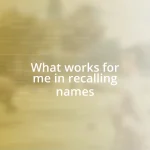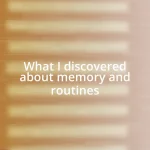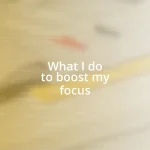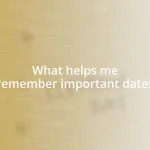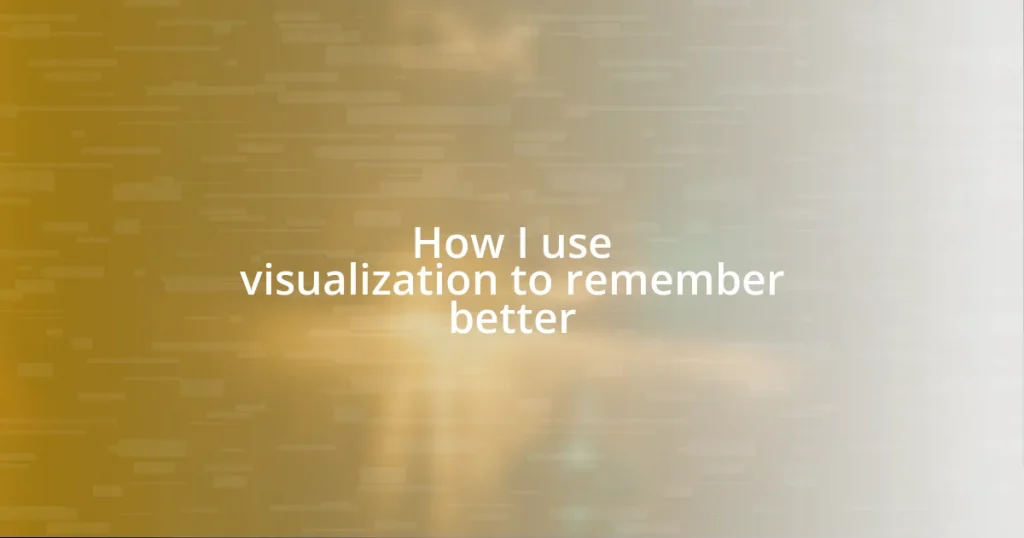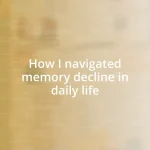Key takeaways:
- Visualization techniques, such as the method of loci and mind mapping, significantly enhance memory retention by turning abstract information into vivid, relatable imagery.
- Incorporating sensory details and storytelling within visualizations creates a more engaging and memorable learning experience, aiding recall during exams and daily tasks.
- Tracking the effectiveness of visualization methods, such as through self-testing and reflective journaling, reveals substantial improvements in learning and understanding complex subjects.

Understanding visualization techniques
Visualization techniques are powerful tools for enhancing memory. For instance, I often find myself picturing information as colorful images or scenes in my mind; it transforms abstract concepts into something tangible and relatable. Have you ever tried converting a list of grocery items into a vivid, animated story? This method can make what seems mundane feel exciting and memorable.
One technique that really resonates with me is the method of loci, also known as the memory palace. I picture walking through a familiar place, like my childhood home, and mentally placing pieces of information in each room. This technique not only makes recalling facts easier, but it also adds an emotional layer to the process; the nostalgia of my past helps anchor the memories. Isn’t it fascinating how our personal experiences can shape the way we remember?
Another aspect I love is color coding—labeling different types of information with specific colors to create a visual hierarchy. When I study, I often find that certain colors evoke specific feelings or even trigger memories from past experiences. For example, I associate blue with calmness, which helps me remember technical information when I’m feeling overwhelmed. Have you noticed how colors can influence your mood or memory? This connection can make a huge difference in how we retain information.
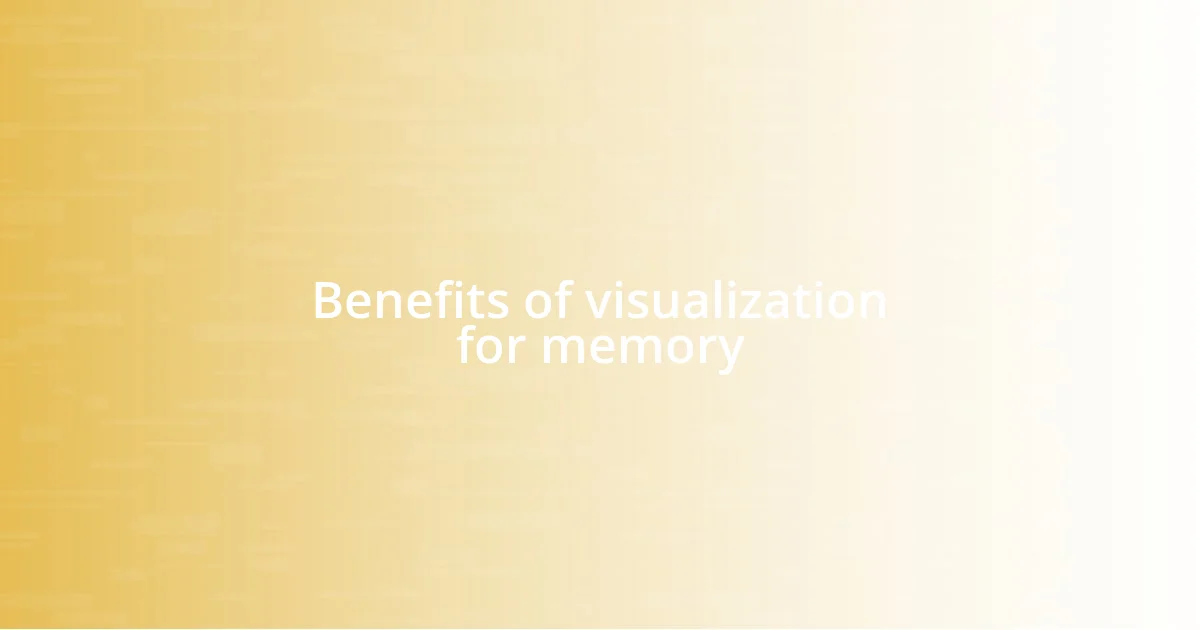
Benefits of visualization for memory
Visualization significantly amplifies memory retention by tapping into our brain’s natural propensity for imagery. I recall studying for my history exams, where I transformed key events into a vibrant timeline filled with vivid illustrations. It was more than just memorizing dates; it became an engaging story that I could visualize and emotionally connect with. This immersion made a colossal difference during my exams, as I could effortlessly recall those images and stories when needed.
Here are some of the key benefits of visualization for memory:
- Enhances Recall: By associating information with vivid images, I often find that recalling specifics becomes second nature.
- Stimulates Emotions: Tapping into emotions linked to images creates lasting connections in my mind, making information feel more personal.
- Harnesses Creativity: It invites me to think outside the box, allowing a rich interplay between creativity and memory, making learning both fun and effective.
- Promotes Engagement: Actively visualizing keeps my mind engaged, which is essential for retaining complex concepts.
- Facilitates Organization: Associating different pieces of information with distinct visuals helps me structure my thoughts and prevents overwhelming clutter in my mind.
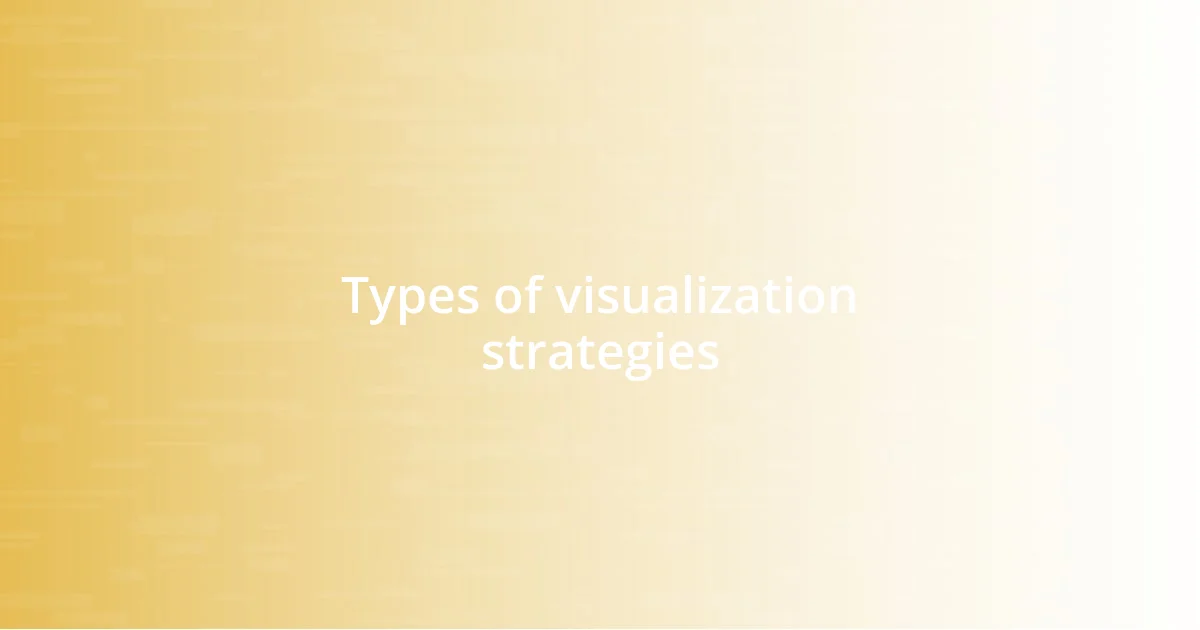
Types of visualization strategies
Visualization strategies can take on various forms, each catering to different learning styles. One approach that I often utilize is the “mind map” technique. By creating a visual layout where I branch out concepts from a central idea, I find it easy to visualize relationships between topics. This strategy not only organizes my thoughts but also helps me retain information through an engaging visual format. Have you ever drawn a mind map? It can feel liberating to see everything come together like a puzzle you’re putting together.
Another fascinating technique is creating infographics, which I personally love to incorporate into study sessions. By converting complicated information into simple charts or graphics, I can represent data in a way that speaks to my visual understanding. For example, when I was learning about ecological systems, I constructed an infographic that illustrated the food chain. It’s incredible how a single image can encapsulate an entire concept, making it far easier to remember.
Additionally, I find that schema-based visualization works wonders for me. This method involves building a mental framework around a particular subject which helps me place new information within an existing structure. When I studied human anatomy, I created a mental image of the human body, organizing each organ by color and function. This vivid representation simplifies complex material, turning overwhelming details into a well-organized mental diagram.
| Type of Visualization | Description |
|---|---|
| Mind Maps | Visual layout of branching concepts, aiding in organization and recall. |
| Infographics | Simplifies complex information using visual formats that enhance understanding. |
| Schema-based Visualization | Mental frameworks that allow for easier integration of new information into existing knowledge. |

Steps for effective visualization
When I engage in visualization, I start by choosing a quiet space where I can immerse myself without distractions. This environment is essential for my focus; I often visualize as if I’m watching a captivating movie in my mind. Have you ever experienced the power of a calm space? It allows my creativity to flourish, letting those vivid images materialize without interruption.
Next, I ensure that the images are not only clear but also infused with sensory details. For instance, when I think about attending a significant event, I might visualize the colors, sounds, and even the emotions circulating around me. This multi-sensory approach enriches the images I create, making them feel real and memorable. I’ve noticed that the more vivid and intense the visualization, the easier it becomes for me to recall the associated facts later. Can you see how these layers of detail bring the concepts to life?
Finally, I incorporate storytelling into my visualization. I often weave a narrative around the information I want to remember, transforming it into a relatable story. For example, when studying a complex scientific term, I might imagine a character navigating through an adventure, where each obstacle represents a different aspect of the concept. This method not only captivates my interest but also makes recall almost instinctive during exams. Have you ever turned facts into a story? It’s a powerful tool that makes remembering feel less like a chore and more like an engaging journey.

Creating personalized visual aids
Creating personalized visual aids has become a central part of my learning process. I often start by tailoring visuals to my interests or connections. For instance, when studying history, I might create a timeline that features not just dates and events but also images of pivotal figures and their quotes. This approach transforms a dry list of facts into a story that resonates with me emotionally. Have you ever felt a bit more inspired when learning through visuals that reflect your passions?
One of my favorite personalized aids is designing flashcards with illustrations that I do myself. Each flashcard includes a simple drawing alongside the concept or term I’m trying to memorize. This creative process is therapeutic for me; it turns studying into a fun art project! I find that the effort I put into drawing helps me create a mental link to the information. Does anyone else find that the act of making something with your hands can deepen understanding?
Moreover, I love incorporating color coding into my visuals. Each subject or topic gets a unique color, making it visually appealing and easier to navigate at a glance. When I was preparing for a comprehensive exam, I mapped out my study material using a color-coded poster. The vibrant hues transformed an overwhelming amount of information into an organized tapestry of knowledge that was visually striking. Have you experienced the magic of color in your studies? It truly adds an extra layer of engagement to the learning experience.
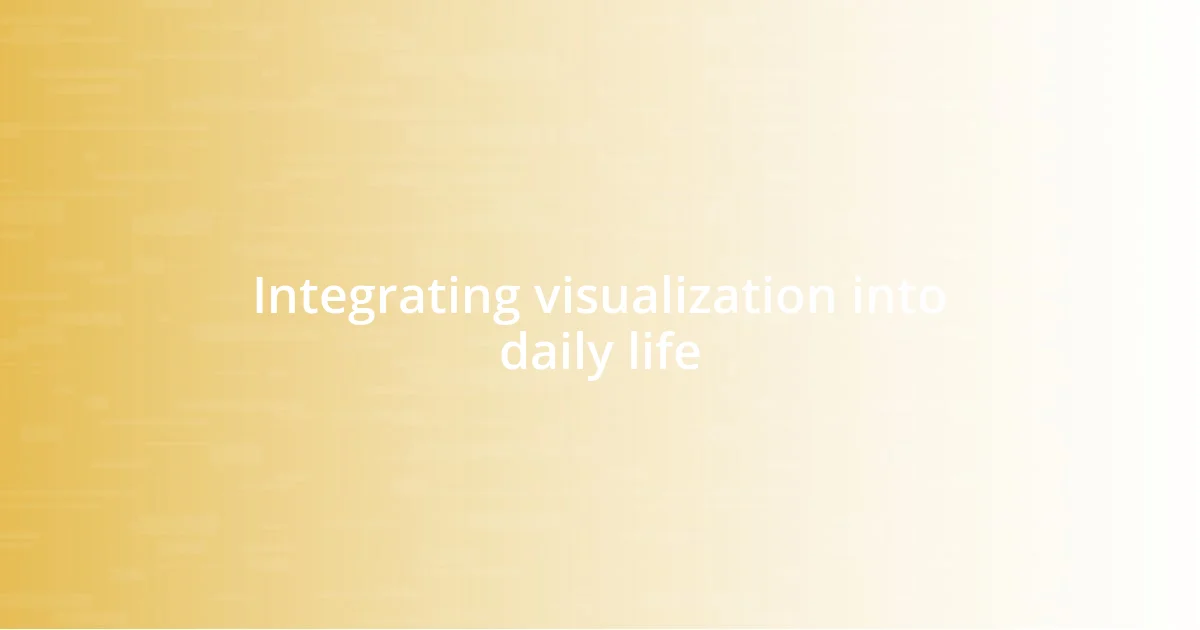
Integrating visualization into daily life
Integrating visualization into daily life can transform mundane tasks into memorable experiences. For instance, when I prepare for a meeting, I visualize myself confidently presenting ideas while picturing the reactions of my colleagues. This practice not only alleviates anxiety but also primes my brain to recall crucial points more effectively. Have you ever imagined how a situation would unfold? This mental rehearsal can be a game-changer.
I also find that utilizing visualization during my morning routine sets a positive tone for the day. Whether it’s envisioning a smooth commute or picturing myself achieving daily goals, these small moments of mental imagery bring clarity and motivation. Interestingly, I’ve noticed that taking just a minute to visualize potential outcomes helps me stay focused and reduces stress. Have you tried this technique to start your day with intention?
Finally, I often integrate visualization into my exercise sessions. As I work out, I visualize my fitness goals—seeing myself crossing the finish line of a race or lifting a heavier weight. This not only boosts my endurance but truly brings a sense of accomplishment to my efforts. Has anyone else felt that spark from imagining what they want to achieve? It’s astounding how visualization can enhance performance and make our aspirations feel more tangible.
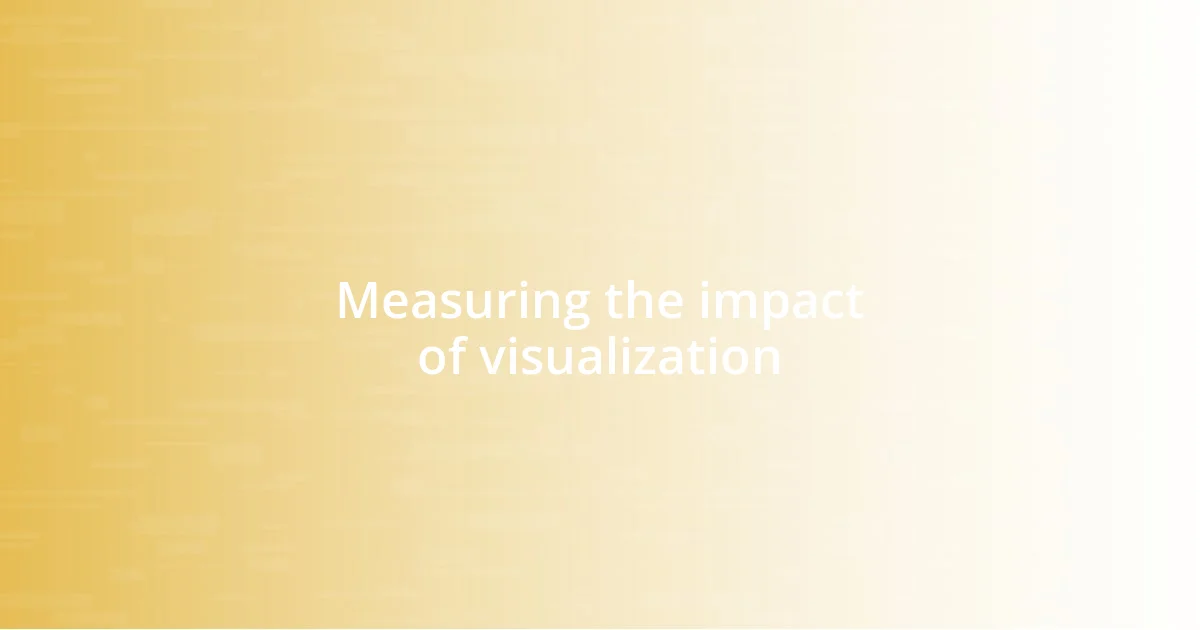
Measuring the impact of visualization
Measuring the impact of visualization often feels like unearthing a treasure trove of insights about my learning process. I recall a specific time when I applied visualization techniques while preparing for a major presentation. I sketched out not just the content but also visualized the audience’s reactions, picturing their nodding heads and engaged expressions. The result? I delivered with confidence and clarity, and the feedback I received was overwhelmingly positive. Can you imagine how powerful it is to see your success in your mind before it happens?
To gauge the effectiveness of my visual strategies, I regularly track my retention rates through self-tests or quizzes. Initially, I found that without visualization, I struggled to remember complex information. However, integrating detailed mind maps and colorful diagrams significantly boosted my performance. One memorable instance was when I scored 20% higher on my exam compared to previous attempts after adopting these methods. Have you ever wondered how a simple shift in approach could yield such dramatic results?
Additionally, I keep a journal where I reflect on my experiences with visualization. This practice has revealed patterns in my learning journey that I might have otherwise overlooked. For example, I’ve noted that certain subjects become instantly more accessible when I create visual representations. It’s incredible to see how this habit transformed my perception of difficult topics, making them feel like puzzles I couldn’t wait to solve. Have you explored documenting your own experiments with visualization? The insights gained can be profound!
